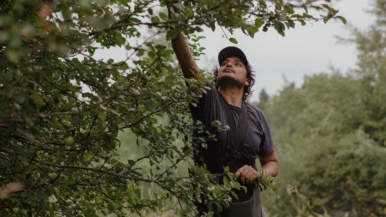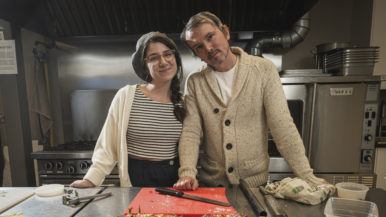I spent my first year as a doctor in a rural ER. It was the most exciting job I ever had

My first gig as a full-fledged doctor was in 2002 at a rural hospital in Markdale, Ontario, a town on Highway 10 south of Owen Sound, with a lone set of traffic lights and a population smaller than your average Toronto high school. From the outside, the hospital looked like a garage. The emergency room had two trauma bays, four treatment rooms and one doctor. Me. When I first toured the place, I asked how to activate a Code Blue, should someone be in dire straits. “Just say it in your head and grab the closest nurse,” the chief told me. “You’re the Code Blue team.”
The first few months, I’d wake with a sense of dread—that maybe this was the day that something bad would happen. A head-on car accident. A backyard drowning. There were so many things I hadn’t seen, so many things I wasn’t prepared to deal with. The chief tried to reassure me: “The stuff you’re worried about comes around once in a blue moon. Just do your best.”
“What if they die?” I said. He shrugged. “Everyone dies eventually.” Sure they do, I thought. But what if they die in front of me? He read my eyes. “Once in a blue moon. You’ll be fine.”
A blue moon rose around my 10th shift. “My son is bleeding,” a woman in her mid-30s anxiously told the registration clerk. The boy was in his teens, tall, lanky and porcelain pale. He’d been to Owen Sound for a bone-marrow biopsy. By the time he’d returned home, he was sitting in a puddle of blood. He held a crimson-drenched towel tightly at his hip. When he lifted it away, a clot the size of a football dropped to the floor. Don’t panic, I told myself.
I grabbed a stack of pads and leaned against him, my hip pressing into his until my scrubs were warm and soaked through. A nurse started him on IV fluids and sent for blood work. “You’re going to be okay,” I told the boy, trying to convince myself as much as him. I sent for O-negative blood and squeezed the IV bag, coaxing fluid into his depleted veins. I phoned the hospital in Owen Sound and told the on-call pediatrician the story. She asked if I wanted to bring him straight over. It was the easy out, jumping in the ambulance so we could both get help. But it wasn’t the right call. “Not yet. His blood pressure is too low.” I imagined doing CPR on the side of a dirt road. “Once he’s stable, we’ll come.”
He kept losing blood until I wondered if he had any left. Eventually, the blood I’d ordered arrived, then platelets. His blood pressure rose enough that he could make it safely to Owen Sound. I felt good about what I’d done. I felt like I could do it again.
A week later, a man in his 40s arrived in the ER. He’d accidentally popped two Aspirin instead of his usual Tylenol. The allergic reaction hit him immediately. He was unresponsive on arrival, registering no blood pressure. “Intubate him?” the nurse asked. “No,” I said. He was swollen like a marshmallow. I wasn’t sure I’d be able to get the tube through his vocal cords. I asked for IV steroids. “We can’t get an IV,” a nurse said. “Can you put in a central line?” I hadn’t done one since residency. Could I? Maybe, I thought, but I could also puncture his lung while I tried to find his jugular vein. I felt like a fraud. “Let’s give him more epi first,” I said. After two more rounds, it worked. “I thought I was going to die,” the man said. Me too, I thought to myself.
Over the next several years, it happened over and over. A six-year-old choking on a Super Ball. A teenager found frozen in a snowbank. A champion snowboarder hitting a tree at full speed. I found that the more stressful cases I handled, the better I became at coping. Procedures didn’t only become easier, they became satisfying. I sought medical courses in the areas that scared me most. I spent weekends in critical-care simulations. I took a course in jugular IV-line placement, and when I felt I had mastered it, I took the course again. With each case, my heart beat a little slower, and the tension between my shoulder blades dissolved.
Eight years in, I started picking up occasional shifts at Southlake Regional Health Centre in Newmarket. That ER treated more patients in 24 hours than Markdale did in a week. The blue moons were as common as blue skies. In many ways, the work was easier—I’d zip into a room, intubate, resuscitate, then pass the patient on to a specialist. I eventually left Markdale, grateful for everything I’d learned there. I liked the fast pace of Southlake. I also liked the comfort—of having a cardiac centre upstairs, a cancer centre next door, an ICU steps away. I realized that there would always be something I hadn’t seen before. My job was to help patients in the best way that I could. And sometimes my best wouldn’t be enough. Sometimes I’d fail.
Several years later, I bumped into the mother of the teenage boy I’d treated in Markdale. As it turned out, her son had leukemia. She thanked me for helping him that day, and for helping her have two more years with him before he passed away. I thanked her too, for letting me look after him, and for letting me be the doctor I’d trained to become.
Raj Waghmare is an ER doctor in Newmarket. He blogs at ertales.com.
Email submissions to memoir@torontolife.com





